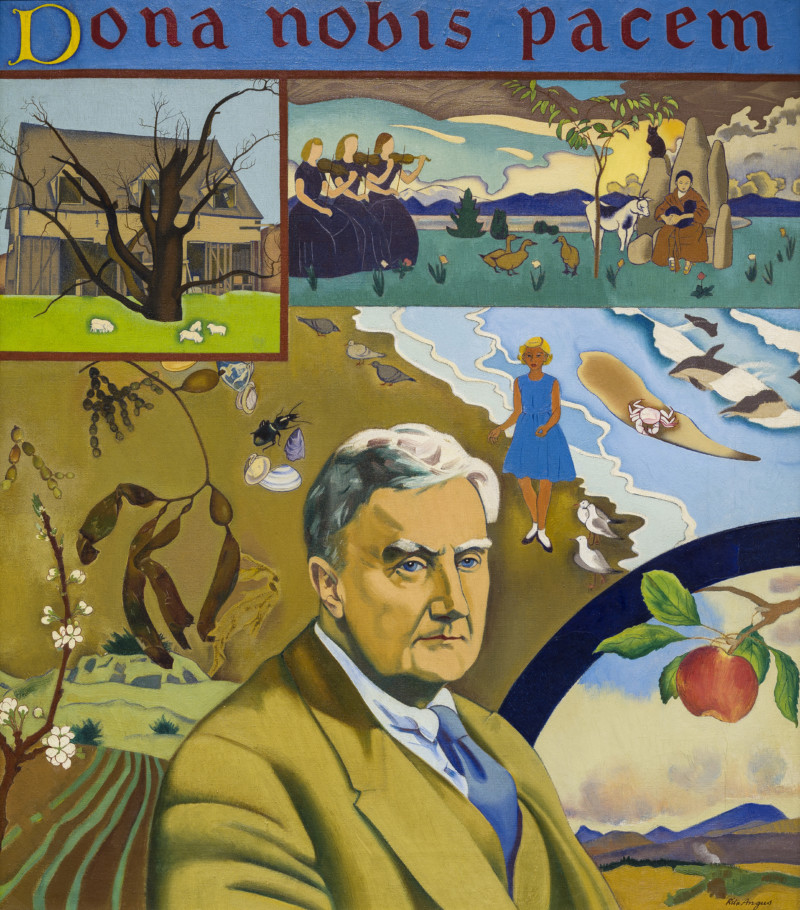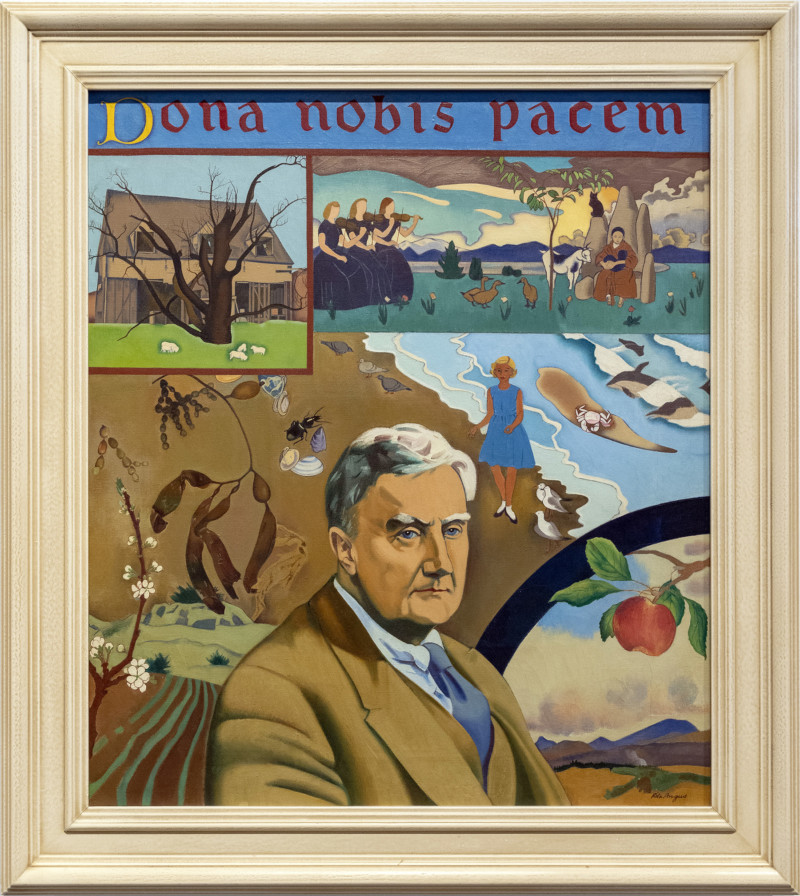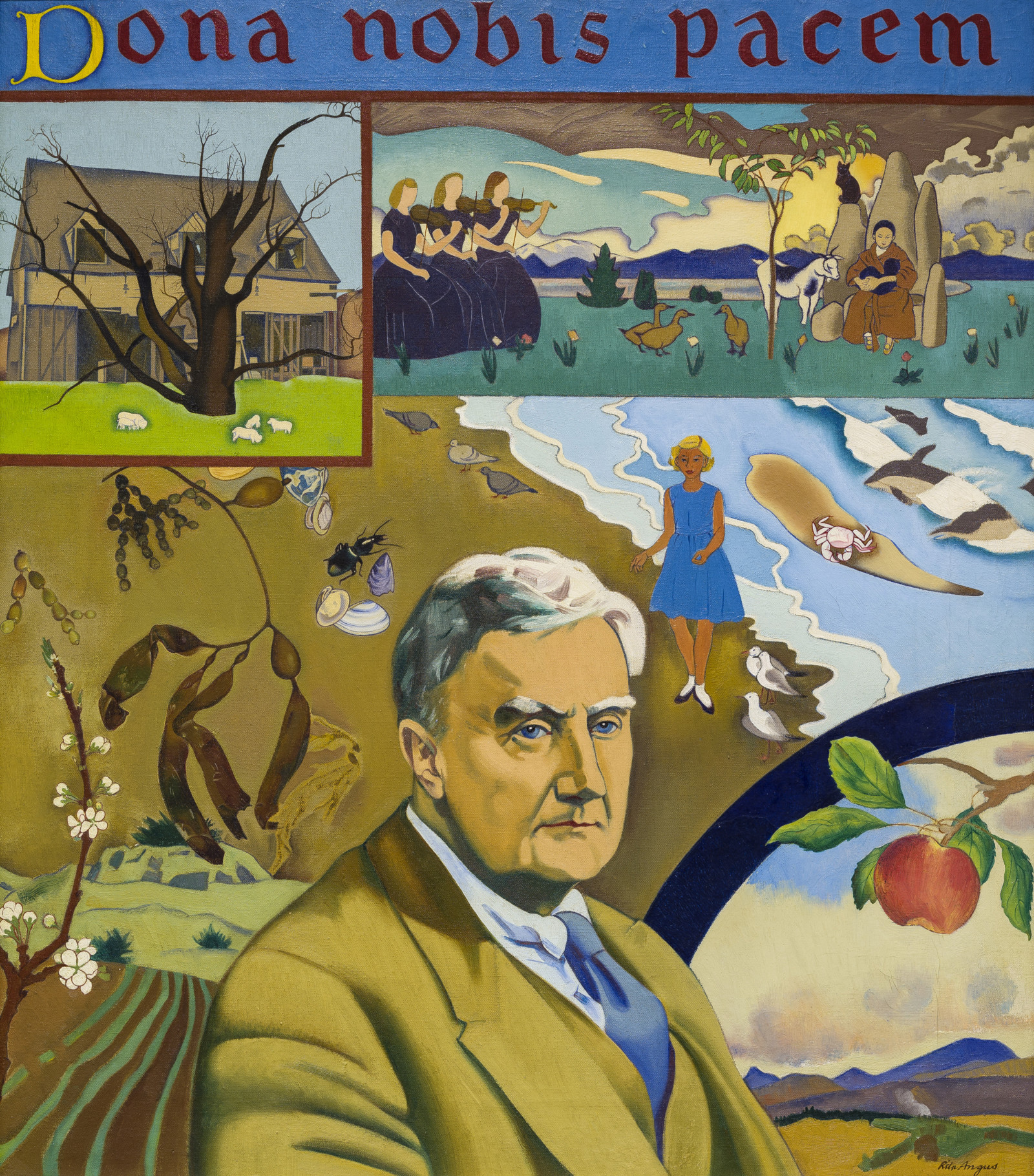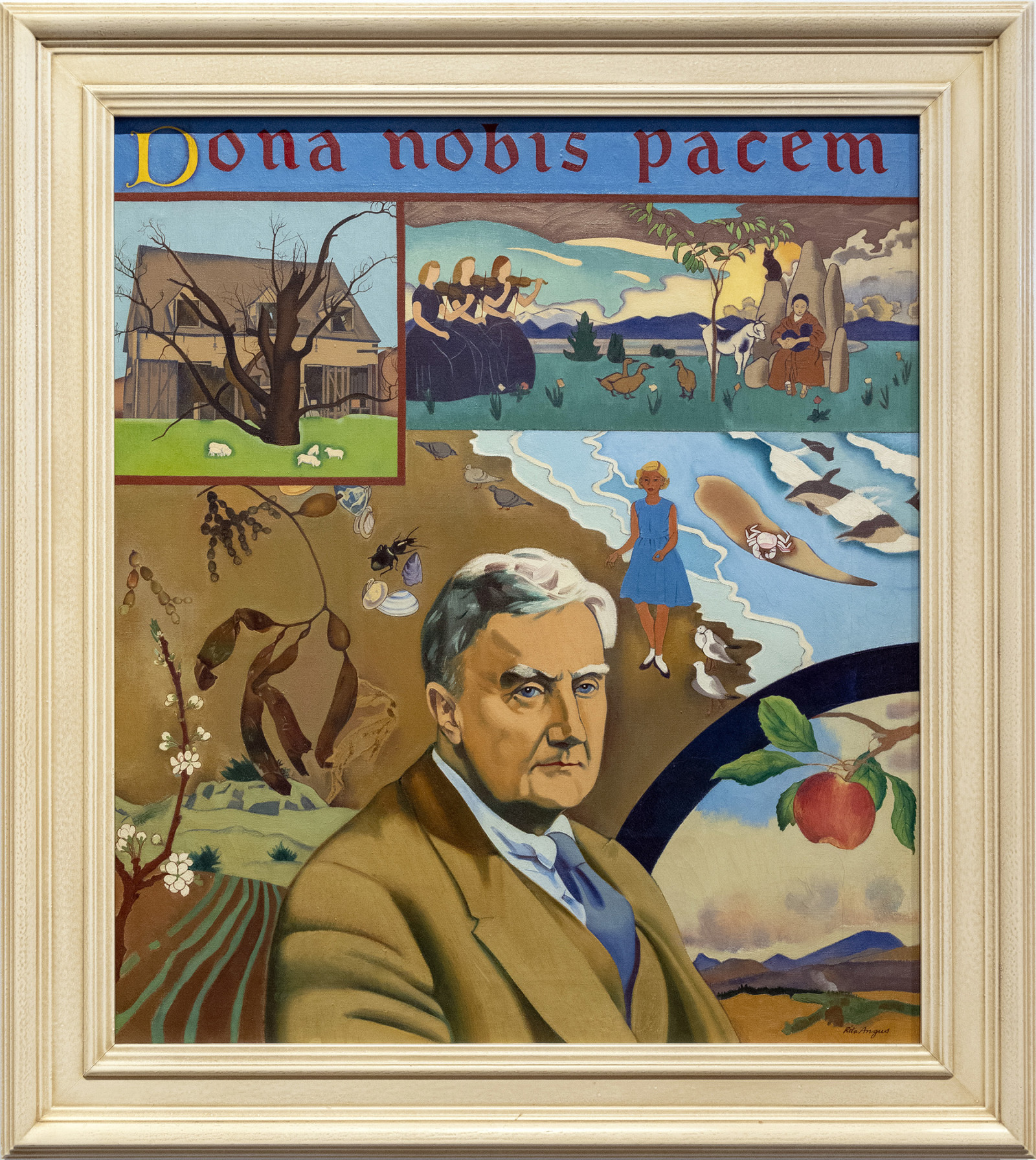ANGUS, Rita;
Dona Nobis Pacem (Ralph Vaughan Williams)
1944
Oil on canvas
785 x 685mm (image); 965 x 865mm (frame)


Rita Angus was an avowed pacifist. Her convictions were shared by various friends, including Leo Bensemann and Harry Courtney Archer. In October 1944, she appeared before the Industrial Manpower Appeal Committee at the Magistrate’s Court after refusing to work at a local rubber factory to support the war effort. She stated, ‘I object to direction into essential industry on the grounds that I am a conscientious objector to war, and, as an artist, it is my work to create life and not to destroy.’[1] That same year, she began Dona Nobis Pacem (Latin for ‘give us peace’).[2] She continued working on it until at least 1948.[3]
Jill Trevelyan has called the painting ‘the most overt expression of her pacifist vision’.[4] It unites a number of genres: allegory, landscape, portraiture, and still life. The figure in the foreground is English composer Ralph Vaughan Williams, himself a pacifist. The title, inscribed along the top edge in heraldic lettering, refers to a 1936 cantata of his of the same name. Vaughan Williams was connected to Aotearoa through professor of music Frederick Page (his wife Evelyn Page also painted a Vaughan Williams portrait) and composer Douglas Lilburn, both of whom studied under him.
Lilburn and Angus were close friends and, for a time, lovers. (Lilburn also had male partners, including artist Douglas MacDiarmid.) They lived close to one another over a number of years, first in the suburb of Clifton, near Sumner beach, Ōtautahi, and later in Thorndon, Te Whanganui-a-Tara. Trevelyan suggests that the work ‘may have been a not-so-subtle piece of propaganda in her campaign to win Lilburn over to the pacifist cause’.[5]
Angus made many preparatory studies for parts of this work and used a photograph for the portrait of Vaughan Williams. Peppered throughout the picture are symbols of fertility, growth, decay, regeneration, harmony, and of course peace. At the centre of the work is a beach on which stands a blond, suntanned child, possibly an idealised representation of the artist as a youth. Above, three violinists—the only specifically musical allusion in the painting—play under a typical Canterbury sky, alongside animals and a sage-like figure based on a drawing of Archer.
The derelict house at top left was sketched at Pangatōtara. Angus had worked there between January and May 1941, picking tobacco at Herbert Helm’s farm in order to avoid war-related work. The apple at lower right evokes Riverside Community, founded by Christian pacifists at Lower Moutere in 1941, where Angus picked apples between February and May 1944, and where, Trevelyan speculates, she may have conceived the idea for the painting.[6]
In the 1930s and 1940s, the area around Tasman Bay Te Tai-o-Aorere was frequented by a number of artists, who went in search of employment and subjects for art. Peter Vangioni notes, ‘Toss Woollaston and Colin McCahon settled in the region for extended periods while others including Doris Lusk and Rita Angus had shorter stays.’ McCahon’s Pangatōtara Landscape No. 1 testifies to his presence, as does Lusk’s Tobacco Fields, Pangatōtara, Nelson (1943), at Auckland Art Gallery Toi o Tāmaki.
[1] Jill Trevelyan, Rita Angus: An Artist’s Life (Te Whanganui-a-Tara: Te Papa Press, 2008), 184.
[2] The work is listed under this title in Angus’s inventory of oil paintings. It is No. 30.
[3] Ibid., 178.
[4] Ibid., 177.
[5] Ibid., 178.
[6] Ibid. In March 1944, Angus was listening to Vaughan Williams’ music.
Inscriptions
Dona nobis pacem [u.] ; Rita Angus [l.r.]Exhibition History
Gathered Voices: Highlights from the Fletcher Trust Collection, New Zealand Portrait Gallery Te Pūkenga Whakaata, Te Whanganui-a-Tara, 15 September to 11 December 2022 (toured)
Rita Angus: New Zealand Modernist | He Ringatoi Hou o Aotearoa, Museum of New Zealand Te Papa Tongarewa), Te Whangaui-a-Tara, 18 December 2021 to 25 April 2022 (toured)
Rita Angus, National Art Gallery (later the Museum of New Zealand Te Papa Tongarewa), Te Whangaui-a-Tara, 9 December 1982 to 6 March 1983 (toured), cat. no. 39
Eight New Zealand Painters, Auckland City Art Gallery (later Auckland Art Gallery Toi o Tāmaki), Tāmaki Makaurau, November to December 1957, cat. no. 3
References
Jill Trevelyan, Rita Angus: An Artist’s Life (Te Whanganui-a-Tara: Te Papa Press, 2008), 164, 177–79.


